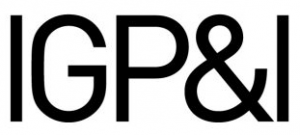Companies calling at European ports need to get ready before the end of the summer: FuelEU Maritime will come into effect from 1 January 2025, but monitoring plans for vessels already calling at European ports must be submitted by 31 August 2024.

FuelEU: Monitoring plans must be ready in August
Written by
Eleni Antoniadou
,
Neil Henderson
Published 05 June 2024
Updated 2 October 2024
The purpose of the FuelEU Maritime(FuelEU) is to stimulate shipping’s uptake of renewable and low-carbon fuels to reduce greenhouse gas (GHG) emissions. Vessels trading within or calling at the EU/EEA, regardless of their flag, will have to comply with the GHG emission limits of the energy used onboard. Further details about the regulation can be found in our introductory article.
Whilst vessels over 5,000 GT have had to submit Monitoring Reporting Verification (MRV) data since 2018, the FuelEU Monitoring Plan is separate to this. Vessels cannot rely upon existing MRV monitoring plans.
Instead, a new Monitoring Plan is required, although aspects of the existing MRV plan can be used.
Who needs to comply?
The company responsible for compliance with FuelEU (the company) is always the ISM company, i.e. the Document of Compliance (DoC) holder, irrespective of whether the DoC holder is the registered owner, a bareboat charterer, or a third-party technical ship manager. As the majority of owners delegate ISM Code responsibilities, in reality the responsible entity is likely to be the technical manager.
This contrasts with the EU ETS, where the responsible company may be the owner or the DoC Holder. As such, the responsible shipping company may differ for the EU ETS and FuelEU. The company must register with an Administering Authority, which is fortunately the same entity as that for EU ETS compliance.
In cases of compliance deficit and FuelEU penalties, the entity responsible for purchasing the fuel or for taking operational decisions that affect the vessel’s GHG emissions could be required to reimburse the ISM company for these penalties.
What does this mean in practice?
Companies will need to submit a separate FuelEU Monitoring Plan for each of their vessels. The EU Commission has produced a template Monitoring Plan, which can be found here.
Monitoring Plans, which can be amended for the particular vessel, are available from classification societies and other third parties accredited by the European Maritime Safety Agency. Some verifiers provide this in an online form format.
Monitoring Plans cannot be submitted to classification societies/accredited third parties for verification until the official EU template standard Monitoring Plan and supporting documentation have been published. This is scheduled for the end of June 2024. Companies will then have July and August to submit their Monitoring Plans to their chosen verifier.
For vessels falling under the scope of the Regulation for the first time after 31 August 2024, companies should submit a Monitoring Plan to the verifier no later than two months after each vessel’s first call at a EU/EEA port.
Well-to-wake GHG emissions
FuelEU is based on a Well-to-Wake approach to the GHG emissions of the energy used onboard a vessel. This means that the emissions in producing and transporting the fuel to the bunker tanks are taken into account, as well as the emissions when the fuel is burned.
Compliance in the first instance requires the use of certified biofuels, LNG, LPG, auxiliary power units (fuel cells), shore power, wind-assisted propulsion, or a combination of these. As zero or near-zero emission fuels (e-methanol, e-ammonia, e-hydrogen) are more widely available, these will enable compliance as the FuelEU GHG limits further reduce from 2030.
The purpose of the Monitoring Plan is to monitor, record and report data about the types and quantities of fuel or other sources of energy used onboard and the GHG emissions associated with them.
Key elements of the revised Monitoring Plan
Vessels trading in the EU/EEA countries should have the approved FuelEU Maritime Monitoring Plan on board before 1 January 2025. Once the Monitoring Plan is finalised, the verifier should record it in the FuelEU database. The Monitoring Plan should be accessible to the Administering State.
The FuelEU Monitoring Plan is detailed and must include the following key elements, amongst other information:
Emissions sources are to be listed and described, such as main engines, auxiliary engines, fuel cells, and waste incinerators.
Fuel types are also to be listed and described, for example: ‘H2 (Fossil)’, ‘NH3 (Fossil), ‘Methanol (Fossil)’, ‘Ethanol’, ‘Bio-diesel’, ‘Hydrotreated Vegetable Oil (HVO)’, ‘e-diesel’, ‘e-methanol’, ‘e-LNG’, ‘e-H2’, and ‘e-NH3’. Where there is fuel blending, each component of the blended fuel must be considered as a separate fuel.
The emission factor to be applied to each fuel type applicable over the reporting period must be identified.
A description of the relevant procedures to update emissions sources, fuel types, fuel consumption and activity data per voyage (such as distance travelled, cargo carried, time spent at sea).
A description of the control system to be put in place, which should include written procedures for data flow activities, risk assessment, and control activities.
Procedures for monitoring the fuel consumption of each fuel type as well as the energy provided by substitute sources or a zero-emission technology. A description of the procedures for monitoring and reporting the well-to-tank and tank-to-wake emission factors of energy to be used on board.
Related reading: Getting ready for FuelEU Maritime - Gard





